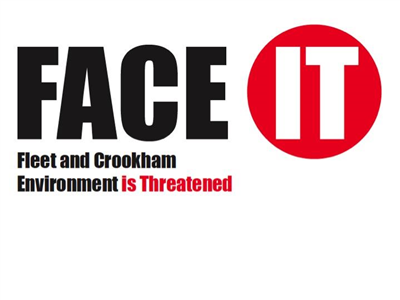Vision
To maintain the area of Fleet, Church Crookham and Crookham Village as a pleasant and desirable place to live, work and play.
Mission
To ensure that the quality of life in the area should be maintained and improved to ensure the physical and mental wellbeing of residents by:
- Ensuring that housing developments are accompanied by the infrastructure needed to support them. This includes health, education, transport, leisure, employment, energy, communications and water services and green and blue infrastructure.
- Assuring the quality of the built environment through housing layout & density consistent with a semi-rural environment.
- Protecting and enhancing the natural environment so that development avoids and protects sensitive sites, minimises environmental impacts, is planned for biodiversity net gain, and ensures designated sites such as SSSIs are maintained in good condition.
- Supporting sustainable development through carbon neutral planning including provision for parking and charging of zero emission vehicles appropriate to each dwelling.
To support, enable, educate and engage with the communities in our area on matters relating to our Vision, Mission and Values and which may also be of concern to them.
Values
FACE IT believes that:
- To the extent that new housing will be needed in Hart, it must be consistent with a valid Local Plan made through consultation by local elected representatives and officials who understand the issues and are accountable to the residents.
- Hart should continue to prioritise use of brownfield sites while recognising that there are very few available and these may not be sufficient to meet the housing targets set by Central Government †.
- Communities in our area should have the opportunity through neighbourhood planning to set out proposals such as: developing a shared vision for our neighbourhoods, choosing where new homes, shops, offices, and other development should be built, identifying and protecting local green spaces, having a say on what new buildings should look like.
- Individual developments should be subject to the appropriate level of scrutiny afforded by the planning system and should be in accordance with the Local Plan (incorporating ‘made’ Neighbourhood Plans, Conservation Area designations, etc) and subject to consultation with communities and individuals local to those developments.
† The methodology for determining the number of dwellings required, in cooperation with our neighbouring authorities, is set by Central Government.
Activities
FACE IT engages in a number of activities in support of the above:
- Work with the Local Planning Authorities to ensure that consultation with and representation by local communities on planning matters is inclusive and effective.
- Liaise with local elected representatives and officials who understand the issues and are accountable to the residents.
- Engage with the Parish Council and Parish Councillors on local planning and environmental matters.
- Maintain and disseminate awareness of National, Regional and Local policies and guidance appropriate to our mission.
- Share factual information with people in the area related to local issues and threats to the environment and their quality of life through various communication media.
- Collaborate with other like-minded groups interested in planning and environmental matters.
[not for publication but this will be selective to include Pale Lane group , Hook action group, Fleet Observers, et. al. also worthy of consideration CVA, Resident Association(s), Conservation association(s)] - Help residents to understand planning context and process, so that they can be involved appropriately in the planning process.
- Submit responses to public consultations and inform locals on how to respond to consultations on such matters as the Local and Neighbourhood Plans and individual development proposals.
- Cover a range of specialist knowledge through engagement with individuals and groups with access to such knowledge.
- Use electronic and social media communication methods and make occasional distributions of leaflets to addresses in the local area to alert neighbourhoods about specific local topics.
- Occasionally hold public meetings, or public engagement through such methods as a stand at the village fete or other public meetings.
